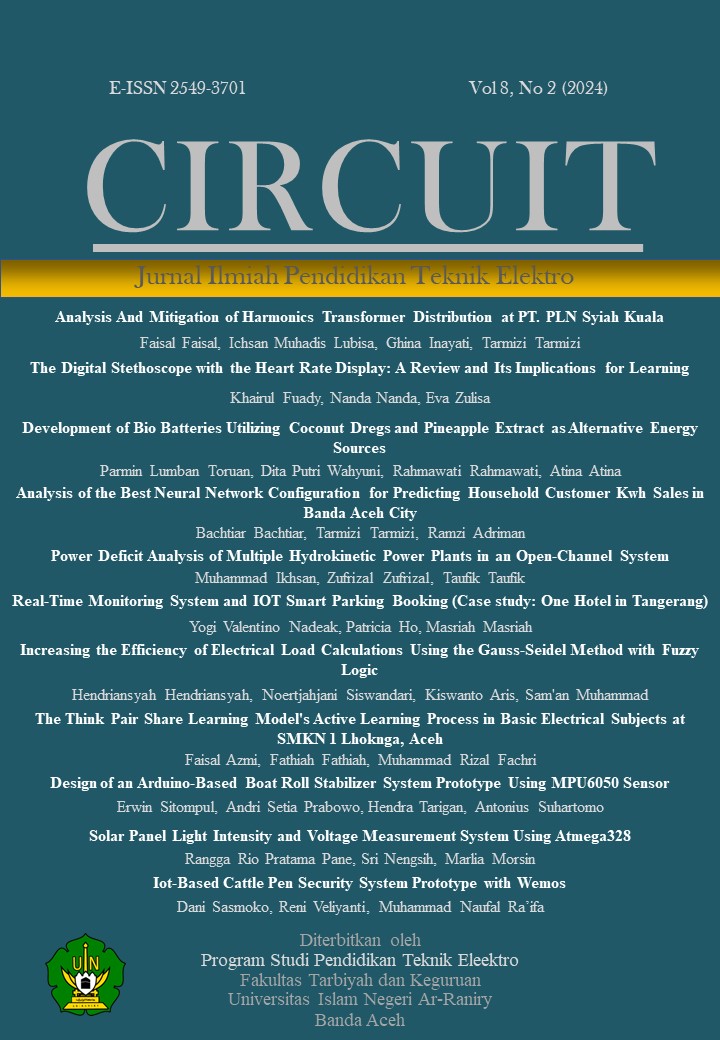Analysis of the Best Neural Network Configuration for Predicting Household Customer Kwh Sales in Banda Aceh City
DOI:
https://doi.org/10.22373/crc.v8i2.22017Keywords:
Energy consumption prediction, Multilayer feedforward network, MSE, MAPEAbstract
Energy consumption (kWh) is critical to the operation of electrical systems. Predictive modeling optimizes energy usage, increasing power system efficiency. This study created an artificial neural network (ANN) architecture to estimate energy consumption (kWh) for home users in Banda Aceh. The ANN topology consisted of 5 input layers, 5-25 hidden layers, and one output layer. This study used two scenarios: first, the ANN topology was trained using the logsig activation function, and then the tansig activation function was used for training. Based on training simulations, the ANN architecture with 5 input layers, 5 hidden layers, and 1 output layer has the lowest Mean Squared Error (MSE) of 0.00035. The next phase involved testing this ANN topology. The next stage is to analyze the ANN architecture with 5 input layers, 5 hidden layers, and 1 output layer using the testing technique. Based on the testing technique, the ANN architecture with 5 input layers, 5 hidden layers, and 1 output layer had a MAPE value of 3.34%.
Downloads
Published
Issue
Section
License
Authors who publish in CIRCUIT: Jurnal Ilmiah Pendidikan Teknik Elektro agree to the following terms:
- Authors retain copyright and grant the journal right of first publication with the work licensed under a Creative Commons Attribution-ShareAlike 4.0 International License (CC BY-SA 4.0) that allows others to share and adapt the work with an acknowledgement of the authorship and initial publication in this journal
- Authors are able to enter into separate, additional contractual arrangements for the non-exclusive distribution of the journal's published version of the work (e.g., post it to an institutional repository or publish it in a book), with an acknowledgment of its initial publication in this journal.
- Authors are permitted and encouraged to post their work online (e.g., in institutional repositories or on their website) prior to and during the submission process, as it can lead to productive exchanges, as well as earlier and greater citation of published work. (See The Effect of Open Acces)

